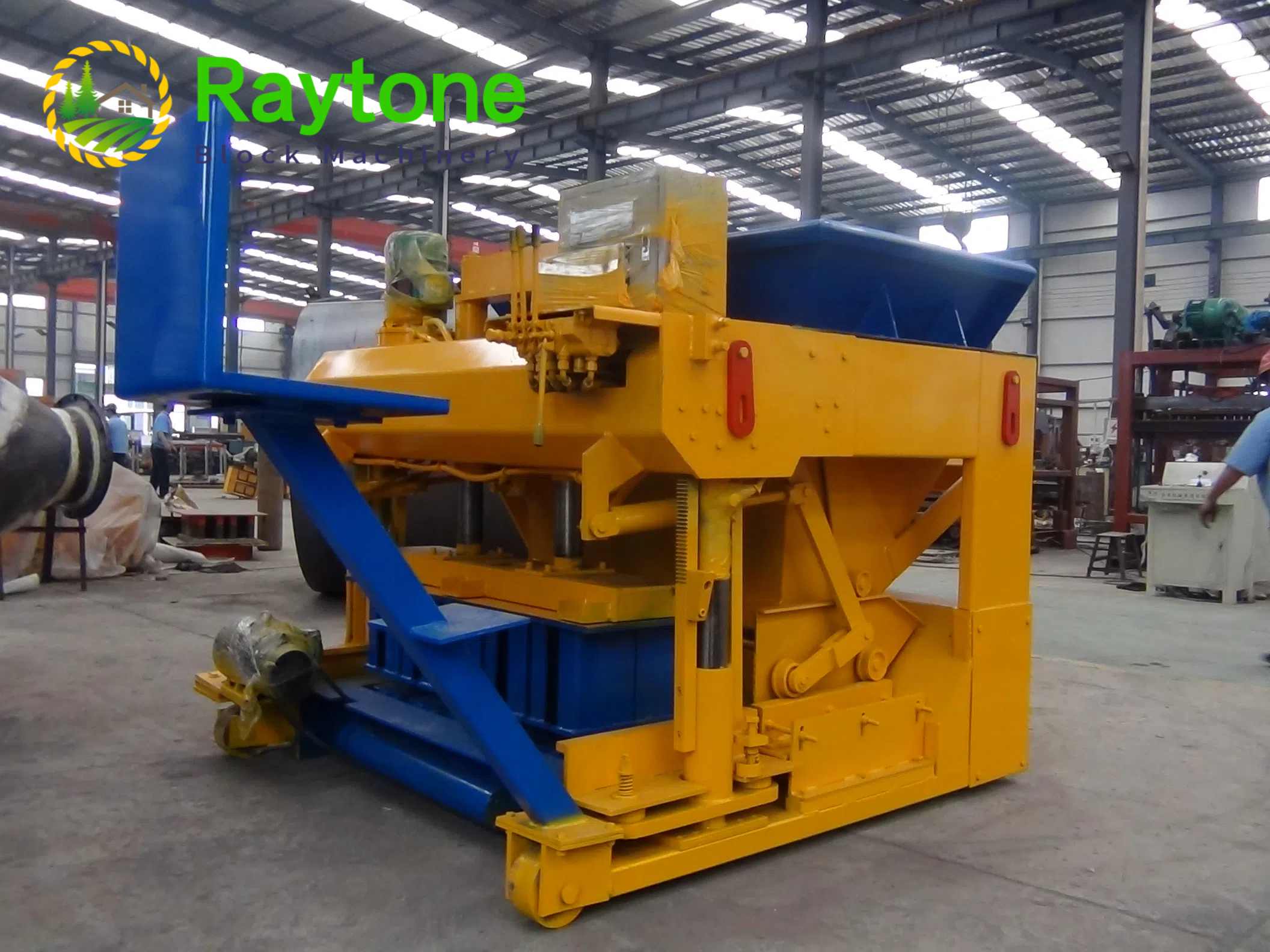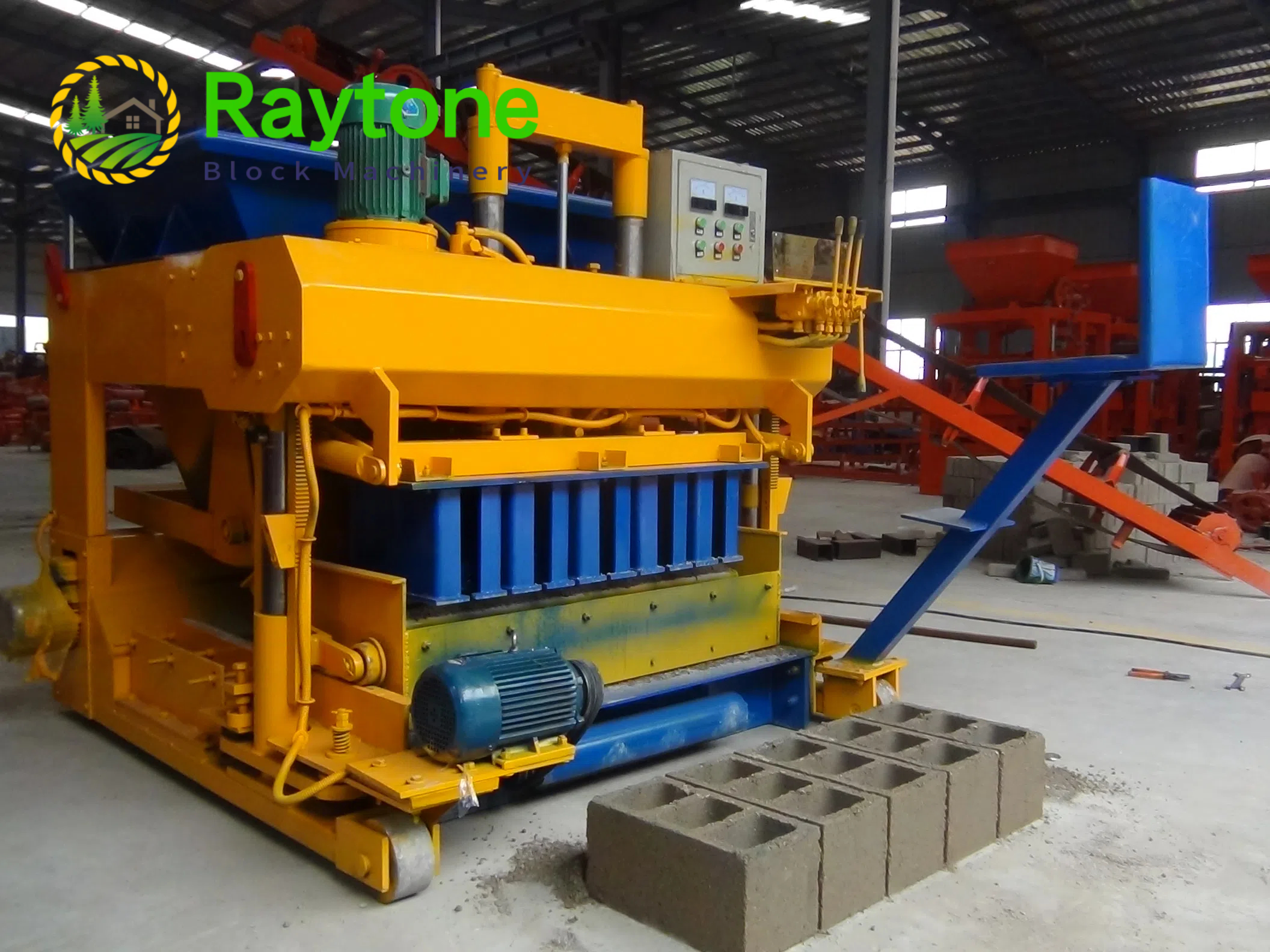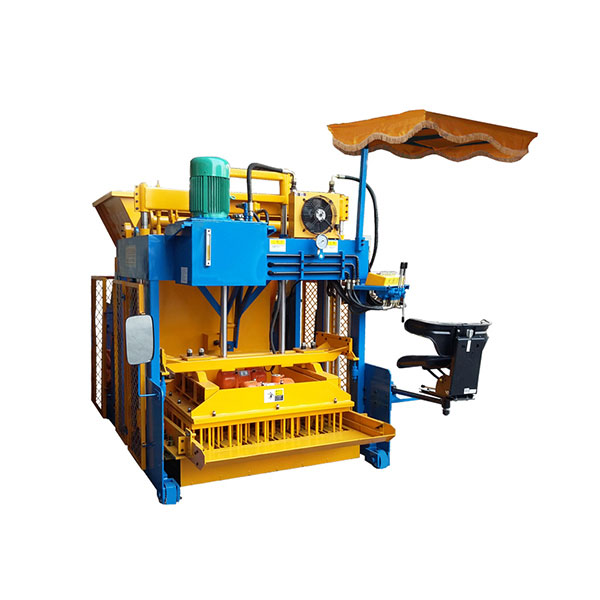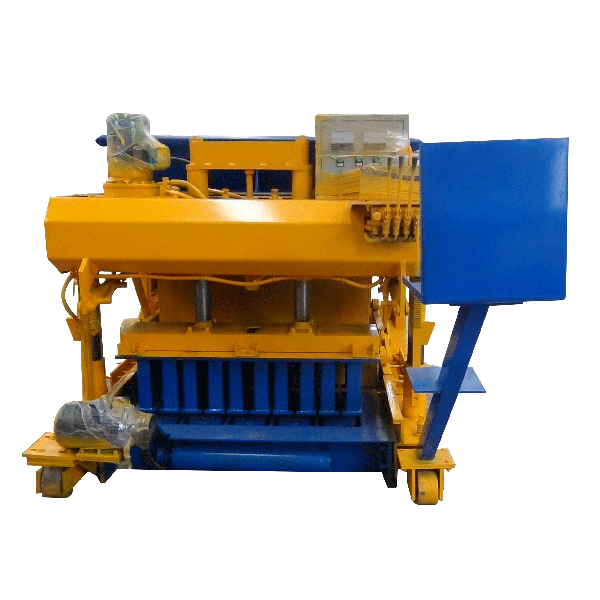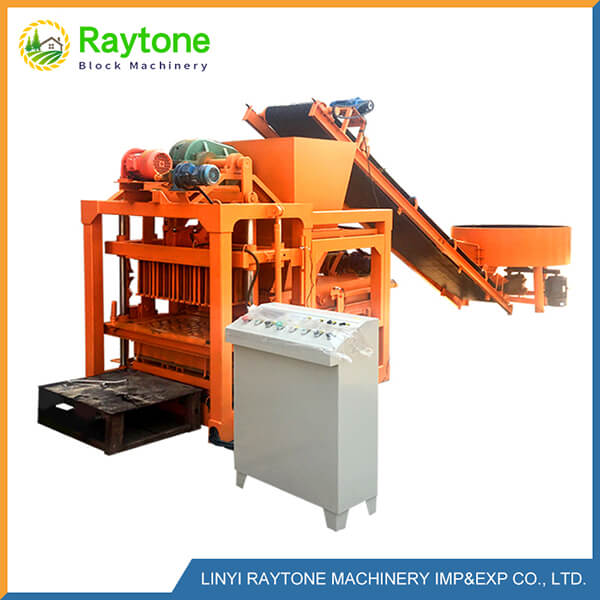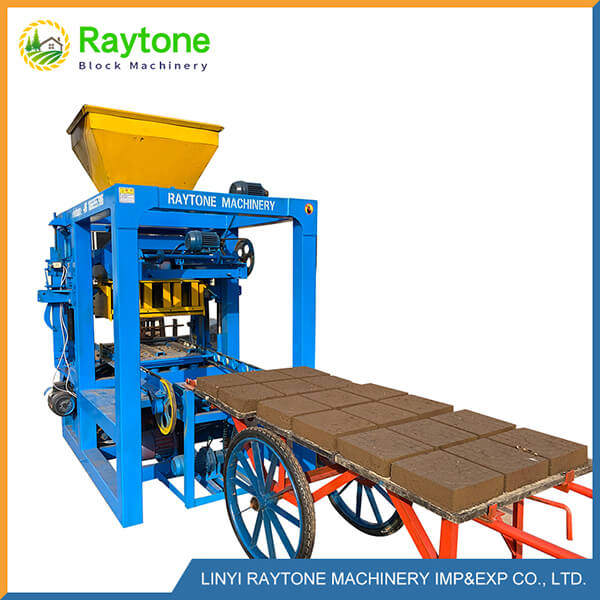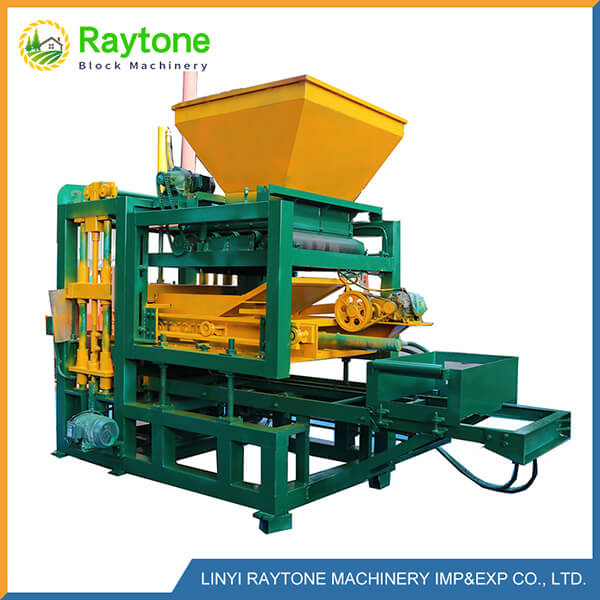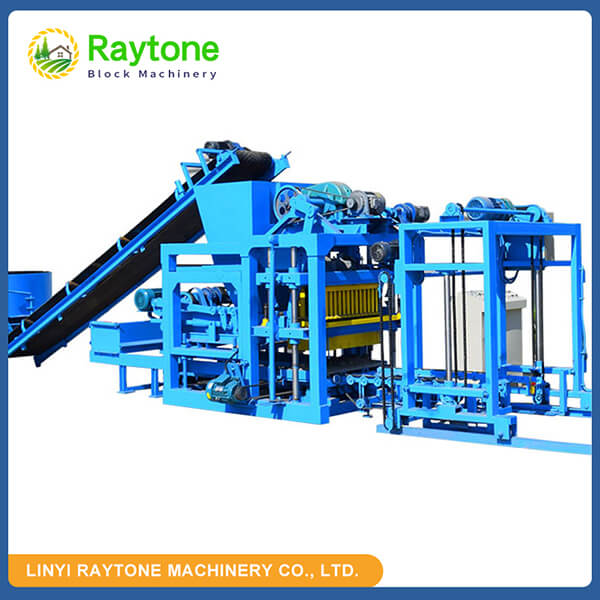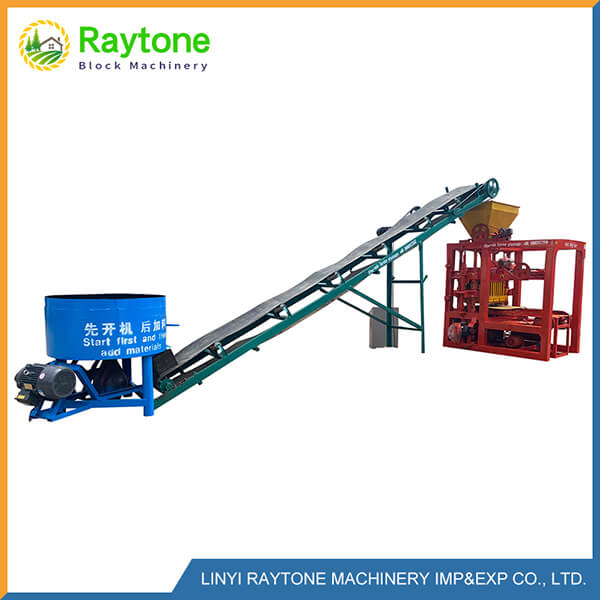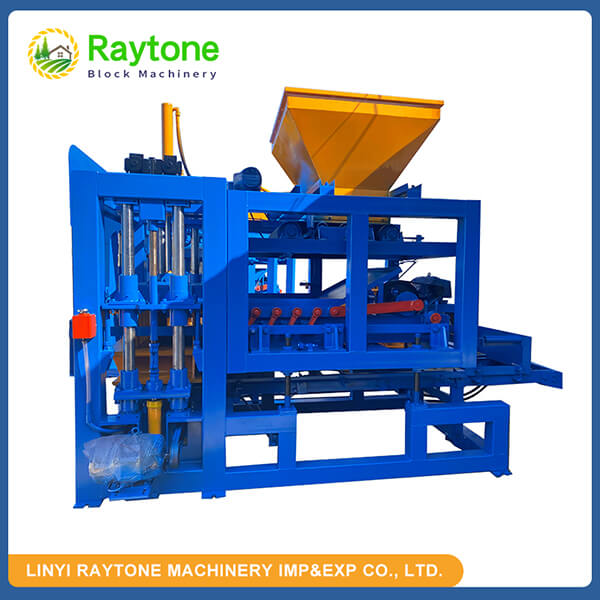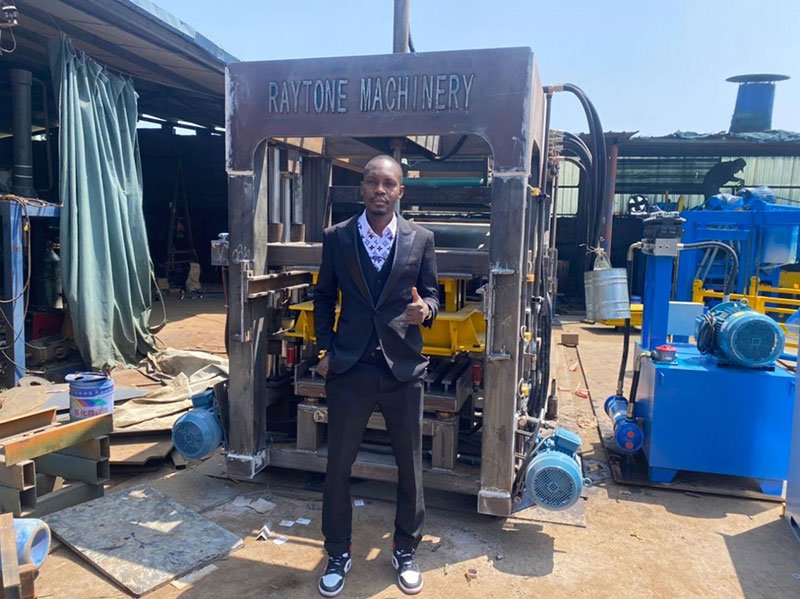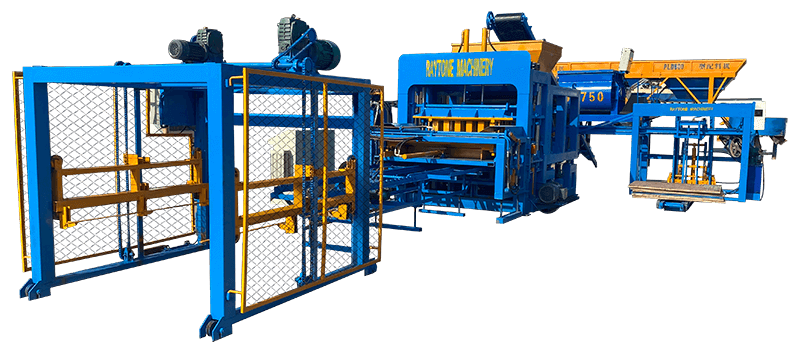A hydraulic block making machine differs significantly from a manual one in terms of efficiency, production capacity, and consistency. Hydraulic machines, like the QT4-25 automatic brick making machine, utilize hydraulic pressure to form blocks, allowing for higher production speeds and more uniform output. These machines can produce thousands of blocks per day with minimal human intervention. In contrast, manual block making machines rely on human power and are much slower, producing fewer blocks with potential variations in quality. Hydraulic machines also offer greater versatility in block shapes and sizes, making them ideal for large-scale construction projects. While manual machines are more affordable and suitable for small operations, hydraulic block makers are the preferred choice for industrial-scale production.
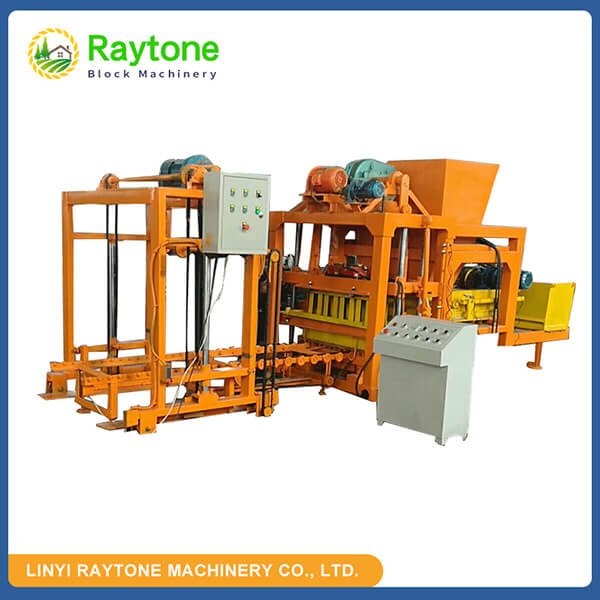
Key Differences Between Hydraulic and Manual Block Making Machines
Production Capacity and Efficiency
Hydraulic block making machines, such as the QT4-25 automatic brick making machine, boast impressive production capacities. These machines can churn out thousands of blocks per day, making them ideal for large-scale construction projects and industrial applications. The hydraulic system allows for rapid and consistent compression, resulting in a steady stream of uniform blocks. On the other hand, manual block making machines have significantly lower production rates. Depending on the operator’s skill and stamina, a manual machine might produce a few hundred blocks per day. This limited output makes manual machines more suitable for small-scale operations or projects with lower demand.
Quality and Consistency
One of the standout features of hydraulic block making machines is their ability to produce blocks with consistent quality. The hydraulic system applies uniform pressure to each block, ensuring that every unit meets the same specifications in terms of density, strength, and dimensions. This consistency is crucial for construction projects that require precise measurements and structural integrity. Manual block making machines, while capable of producing good quality blocks, are more prone to variations. The quality of the blocks depends heavily on the operator’s skill and the consistency of their technique. Fatigue can also play a role, potentially leading to variations in block quality over the course of a workday.
Versatility and Block Variety
Hydraulic block making machines offer exceptional versatility when it comes to block shapes and sizes. Many modern hydraulic machines, including advanced models like the QT4-25, can be equipped with interchangeable molds. This feature allows manufacturers to produce a wide range of block types, from standard solid blocks to hollow blocks, paving stones, and even decorative designs. Manual block making machines typically have more limited options for block variety. While some manual machines do offer changeable molds, the process of switching between different block types is often more time-consuming and labor-intensive compared to their hydraulic counterparts.
Operational Aspects of Hydraulic vs. Manual Block Making Machines
Labor Requirements and Skill Level
Hydraulic block making machines, particularly fully automatic models like the QT4-25, require minimal manual labor for operation. These machines are typically operated by a small team of skilled workers who oversee the production process, monitor quality, and perform routine maintenance. The automated nature of hydraulic machines reduces the physical strain on workers and allows for more consistent production over long periods. Manual block making machines, as the name suggests, are much more labor-intensive. They require continuous physical effort from operators to mix materials, fill molds, and apply pressure for block formation. This demanding work can be tiring, potentially leading to reduced productivity over time. Manual machines also require a certain level of skill and experience to produce high-quality blocks consistently.
Energy Consumption and Power Sources
Hydraulic block making machines rely on electrical power to operate their hydraulic systems, motors, and control panels. While they consume more energy than manual machines, their high production output often makes them more energy-efficient per block produced. Some advanced hydraulic machines incorporate energy-saving features to optimize power consumption. Manual block making machines, by contrast, primarily rely on human power. This makes them an excellent option for areas with limited access to electricity or for small-scale operations looking to minimize energy costs. However, the trade-off is in production capacity and the physical demands placed on operators.
Maintenance and Durability
Hydraulic block making machines, including models like the QT4-25, are sophisticated pieces of equipment that require regular maintenance to ensure optimal performance. This maintenance includes checking hydraulic fluid levels, lubricating moving parts, and periodically inspecting key components. While the initial investment in a hydraulic machine is higher, these machines are built to withstand continuous operation and can last for many years with proper care. Manual block making machines generally have simpler designs with fewer moving parts, which can make them easier to maintain. However, the constant physical stress placed on these machines during operation can lead to wear and tear over time. Regular maintenance is still necessary, focusing on keeping the mold clean, ensuring proper alignment, and replacing worn parts as needed.
Economic Considerations: Hydraulic vs. Manual Block Making Machines
Initial Investment and Return on Investment (ROI)
Hydraulic block making machines, such as the QT4-25 automatic brick making machine, represent a significant upfront investment. The cost of these machines can range from tens of thousands to hundreds of thousands of dollars, depending on the model and features. However, their high production capacity and efficiency often lead to a faster return on investment, especially for businesses handling large-scale projects or those with consistent, high-volume demand for blocks. Manual block making machines are considerably less expensive, with prices typically in the hundreds to low thousands of dollars. This lower initial cost makes them an attractive option for small businesses or individuals starting in the block-making industry. However, the lower production capacity means it may take longer to recoup the investment through sales.
Operational Costs and Profit Margins
When it comes to operational costs, hydraulic block making machines have higher expenses related to electricity consumption and maintenance. However, these costs are often offset by the machines’ ability to produce large quantities of blocks quickly and with minimal labor. The consistency in quality also reduces waste and rework, contributing to better overall profit margins. Manual block making machines have lower operational costs in terms of energy consumption, but they require more labor. This can lead to higher labor costs, especially in regions with high wages. The slower production rate and potential for quality variations can also impact profit margins, particularly when competing with producers using more efficient hydraulic machines.
Scalability and Market Adaptability
Hydraulic block making machines offer excellent scalability for businesses looking to expand their production. Many models, including advanced versions of the QT4-25, can be integrated into larger production lines or paired with additional machines to further increase output. This scalability allows businesses to adapt quickly to growing market demands or take on larger projects. Manual block making machines have limited scalability. Increasing production typically means adding more machines and more labor, which can be challenging to manage efficiently. However, manual machines do offer flexibility in terms of production location, as they can be easily moved to different sites as needed.
Conclusion
In conclusion, the choice between a hydraulic block making machine and a manual one depends on various factors including production needs, budget, and operational context. Hydraulic machines, like the QT4-25 automatic brick making machine, offer high efficiency, consistency, and scalability, making them ideal for large-scale operations. Manual machines, while limited in output, provide a cost-effective solution for smaller projects or areas with limited resources. Understanding these differences is crucial for making an informed decision that aligns with your specific block production requirements and business goals.
Contact Us
For more information about our range of block making machines, including the advanced QT4-25 automatic brick making machine, please contact us at hazel@raytonechina.com. At Raytone Machinery, we’re committed to providing high-quality, cost-effective block making solutions tailored to your needs, ensuring excellent value and support for your construction projects.
References
- Smith, J. (2022). “Advancements in Hydraulic Block Making Technology.” Journal of Construction Equipment, 45(3), 78-92.
- Johnson, R. & Lee, S. (2021). “Comparative Analysis of Manual and Hydraulic Block Production Methods.” International Conference on Sustainable Building Materials, 112-125.
- Brown, A. (2023). “Energy Efficiency in Modern Block Making Machines.” Sustainable Construction Review, 18(2), 203-217.
- García, M. et al. (2022). “Quality Control in Automated vs. Manual Block Production.” Construction Materials Today, 56(4), 345-360.
- Wilson, T. (2021). “Economic Implications of Hydraulic Block Making Machines in Developing Markets.” Journal of Construction Economics, 33(1), 67-82.
- Thompson, E. & Patel, N. (2023). “Scalability and Adaptability in Block Production: A Case Study.” International Journal of Construction Management, 41(2), 178-193.


